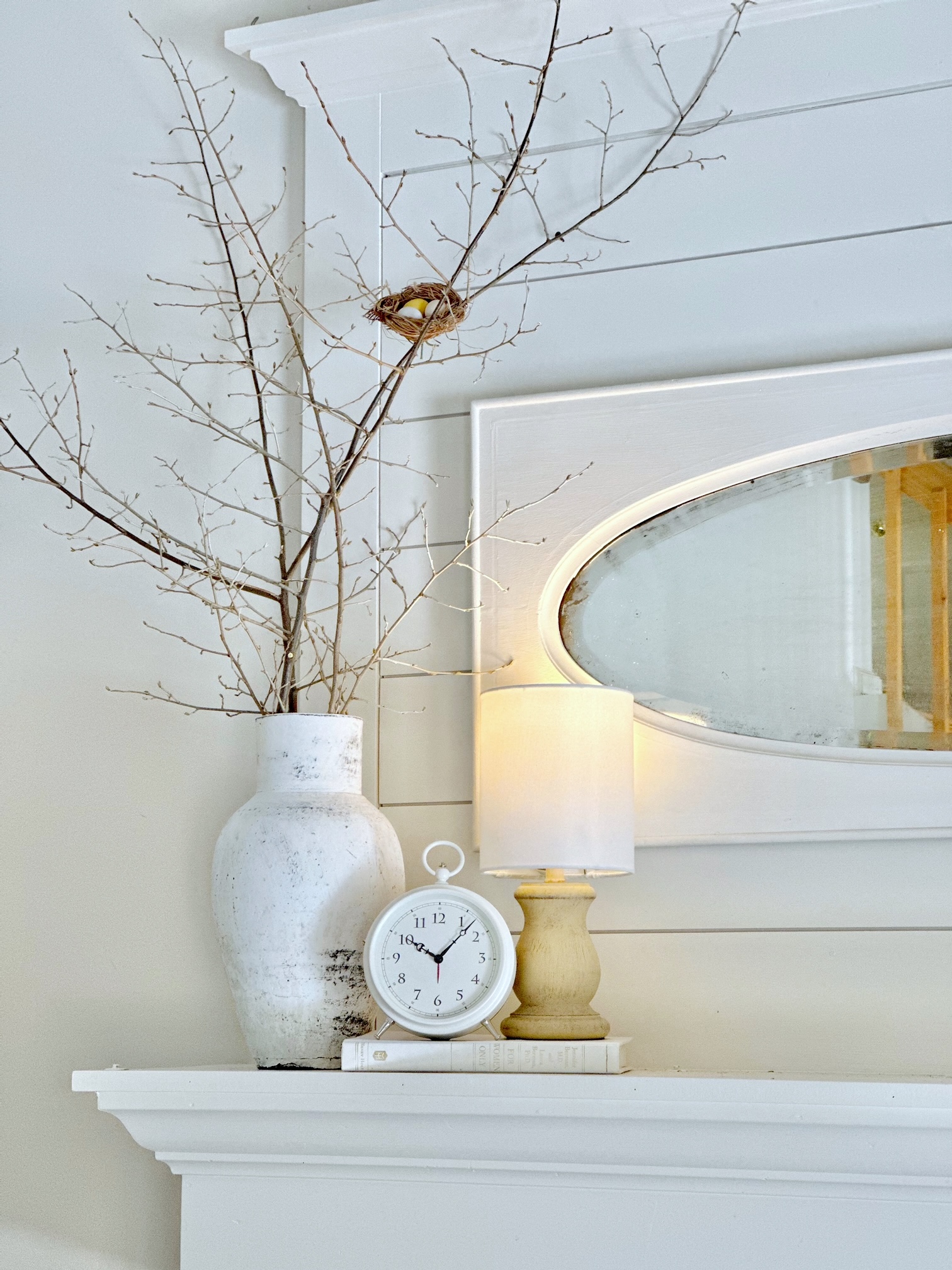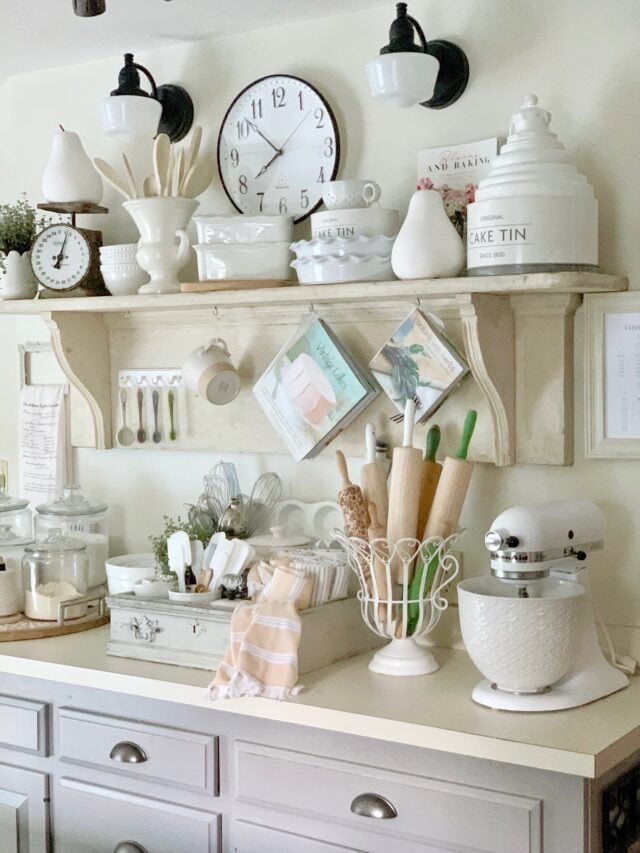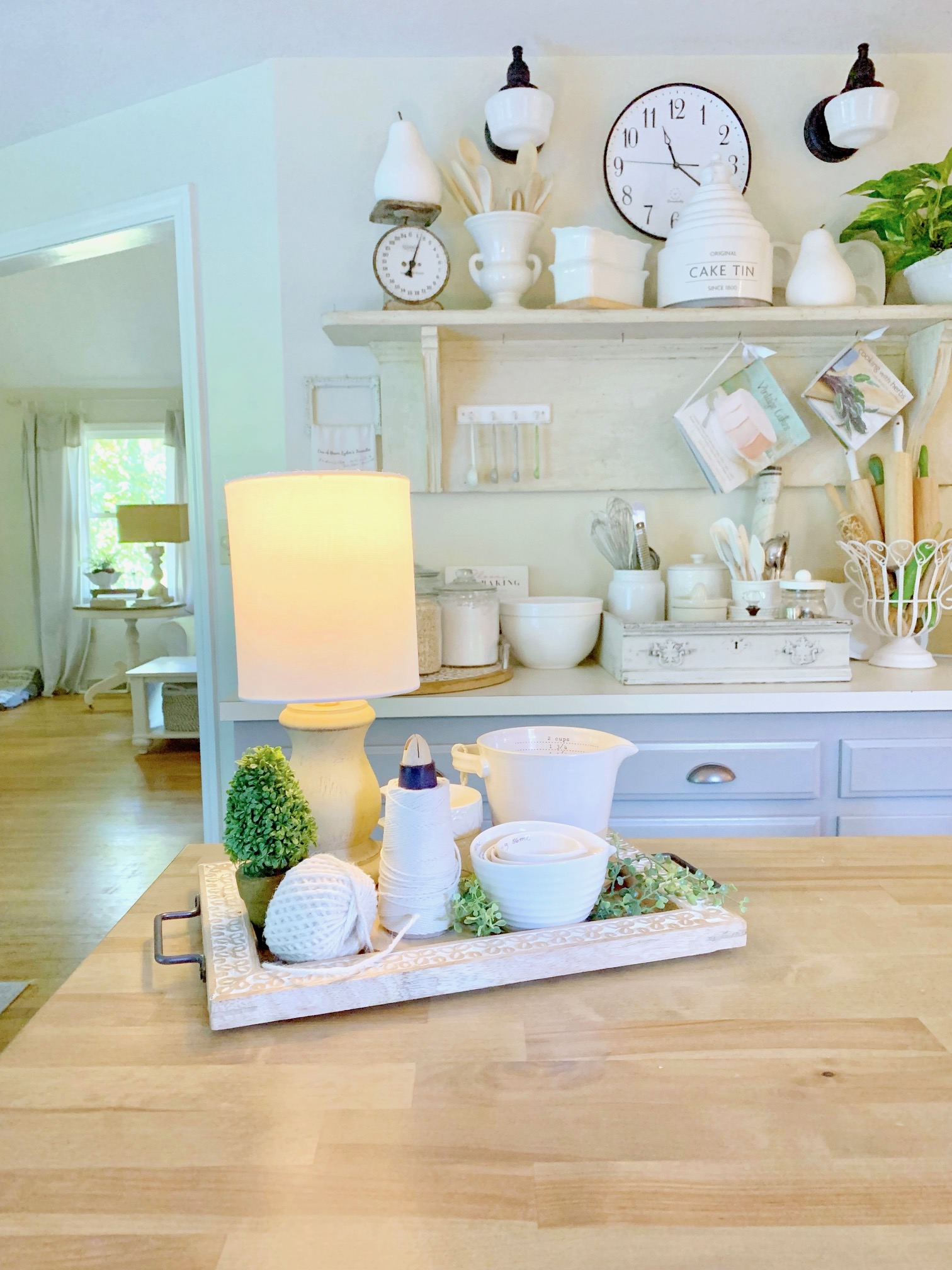Picture this: You've found the perfect spot for a lamp in your cozy living room – it would look absolutely stunning on your DIY faux wood side table. There's just one tiny problem... the nearest outlet is halfway across the room. Cue the dramatic sigh and the inevitable compromise on your design dreams.
Sound familiar?
I used to think cordless lamps were either those sad, dim little battery-powered things that barely illuminate a book, or ridiculously expensive designer pieces that cost more than my monthly grocery budget. Turns out, I was completely wrong.

*This post includes affiliate links, for more info on affiliate links visit here
What if I told you that you can transform almost any regular lamp into a bright, beautiful cordless wonder in about 10 minutes? No electrician required, no sketchy DIY wiring, and definitely no compromising on style.
Whether you're tired of playing "extension cord limbo" around your furniture, want to childproof those dangling temptations, dream of floating a gorgeous floor lamp in the center of a room (designer-style!), or need the perfect finishing touch for your newly finished mantel with that gorgeous overmantel you just installed, this simple trick is about to become your new best friend.
Ready to cut the cord – literally? Let's dive into how to make any lamp cordless with one genius little secret that's hiding in plain sight at your local hardware store.
Jump to:
- Why go cordless? (the game-changing benefits)
- What you'll need (just 3 simple supplies)
- Step-by-step instructions
- Troubleshooting Common Issues
- Alternative cordless lamp methods (quick overview)
- Where to style your new cordless lamp
- Frequently asked questions
- More lighting & home DIY projects
- Shop this post
Why go cordless? (the game-changing benefits)
Let me paint you a picture of my pre-cordless lamp life: I had this gorgeous vintage brass lamp that I loved but could never find the right spot for. Why? Because every time I placed it somewhere that looked amazing, there was inevitably no outlet within reach. So it lived in my closet, looking pretty but completely useless.
Then there was the whole toddler phase (if you know, you know). Those dangling cords might as well have been designed specifically to trip adults and fascinate tiny humans. I spent more time tucking cords behind furniture than I care to admit, and don't even get me started on the creative routing required to avoid creating a household obstacle course.
Here's what changed everything about cordless lamps:
- Safety First, Style Second No more worrying about little hands tugging on cords or pets turning your beautiful lighting into a hazard zone. When you eliminate the cord, you eliminate the risk – it's that simple. Plus, no more fire hazards from frayed wires or overloaded extension cords snaking across your floors.
- Design Freedom That'll Make You Giddy Suddenly, any surface becomes fair game for a lamp. That perfect spot on your kitchen island? Yes. The center of your coffee table? Absolutely. That floating console in the middle of your living room that screams for a gorgeous table lamp? Finally possible! I've placed lamps in spots I never dreamed of before, and it's honestly a little addictive.
- Goodbye, Cord Chaos No more playing "hide the ugly cord" behind furniture or investing in cord covers that never quite match your decor. No more strategic plant placement to camouflage extension cords. Your Instagram-worthy room shots will thank you – trust me on this one.
- The Wallet Reality Check Here's where it gets really good. Those beautiful cordless lamps you see in fancy home stores? They start around $400 and can easily hit $600+. Meanwhile, this DIY method costs about $15 per lamp. Yes, you read that right. We're talking about transforming a $10 thrift store find into a $400-looking cordless masterpiece for the price of lunch.
- My "Lightbulb" Moment I discovered this method completely by accident during a power outage last winter. I had one of those emergency backup bulbs and popped it into a regular lamp just to see what would happen. When the bulb lit up bright and beautiful without being plugged in, I literally did a little happy dance in my dark living room. It was one of those "why didn't I think of this sooner?" moments that change everything.
Now I have cordless lamps scattered throughout our home, and every single guest asks about them. The best part? They have no idea these aren't expensive designer pieces – they just see beautiful, perfectly placed lighting that somehow magically works without a single visible cord.

What you'll need (just 3 simple supplies)
- Small lamp of your choice (here's the one I use)
- GE LED+ Rechargeable Battery Backup Light Bulb (this is a pack of 2 and I recommend you get 2 so you can have one always charging)
- Wire cutters
Note: Another light bulb option that runs on AAA batteries is these AlltroLite 4 Pack Bulb Portable Wireless COB LED Light Bulb . These bulbs are a cool bright white and do not screw into a lamp but come with a holder that you can attach to just about anything. These bulbs come with an adhesive strip, AAA batteries, and a remote control. are included in this pack.
Step-by-step instructions
- Charge Your Battery Bulb Time:
10 hours (initial charge)
Screw the GE LED+ Battery Backup Light Bulb into any regular lamp that's plugged into the wall. Let it charge for the full 10 hours on the first use - this ensures maximum battery life. The bulb will look just like a regular LED bulb while it's charging, but it's actually storing power for later use.
- Cut the Cord Time:
2 minutes
IMPORTANT: Make sure your lamp is unplugged first! Using wire cutters, cut the power cord as close to the lamp base as possible for the cleanest look. If you think you might want to use the lamp with an outlet in the future, simply gather the cord and secure it with an elastic band so you can tuck it behind the lamp to hide it.
- Install and Test Time:
1 minute
Remove the charged bulb from the charging lamp and screw it into your newly cordless lamp. Flip the switch and enjoy your cord-free lighting! The bulb provides warm, bright light for 8+ hours on a single charge.
Pro tip: Buy two bulbs so you can keep one charging in a regular lamp while using the other in your cordless lamp. This way you'll always have a backup ready to go, and you can easily rotate them when needed.
Troubleshooting Common Issues
Even the best DIY projects come with their quirks, and cordless lamp conversion is no exception. Here are the most common hiccups I've encountered (and how to fix them):
The Bulb Won't Fit My Lamp: This usually happens with smaller lamps that use candelabra bulbs or specialty sizes. The GE LED+ bulbs are standard A19 size, so they won't work in every lamp. My friend Tina has a brilliant workaround for this: she turns the bulb upside down and just rests it on top of the small socket. It sounds weird, but it actually works perfectly and you'd never know it's not screwed in! For lamps with really tiny sockets, consider switching to the puck light method instead (which I'll cover in a future post).
The Light Seems Dimmer Than I Expected: You're not imagining it – battery-powered bulbs will never be quite as bright as a traditional 60-watt bulb plugged into the wall. The GE bulbs put out about 800 lumens, which is decent but not blazing bright. This method works best for ambient lighting, mood lighting, or accent lighting rather than task lighting. If you need bright light for reading or detailed work, stick with a plugged-in lamp for those areas.
The Remote Control Is Driving Me Crazy: I hear you on this one. Some battery bulbs come with tiny remotes that are easy to lose and annoying to keep track of. Here's what I do: grab a small piece of velcro and stick it to the back of the remote, then attach the other piece under the table or surface where your lamp sits. Instant remote storage that's always within reach but completely hidden.
When This Method Just Won't Work Let's be honest – this isn't a magic solution for every lighting situation. Skip this method if:
- You need super bright task lighting (like for detailed crafts or reading)
- Your lamp has a built-in dimmer switch (the battery bulbs won't work with dimmers)
- You're dealing with a really heavy floor lamp that could tip over without the cord weight for stability
- The lamp has multiple bulbs (battery bulbs get expensive fast when you need several)
- You forget to charge things regularly (because dead battery bulbs are just expensive paperweights)
Quick Reality Check This method is fantastic for creating beautiful ambient lighting and solving design problems, but it's not going to replace every lamp in your house. Think of it as the perfect solution for specific situations rather than a complete lighting overhaul. When it works, it's absolutely magical – just manage your expectations and choose your spots wisely.

Alternative cordless lamp methods (quick overview)
While the battery backup bulb method is my go-to for most situations, it's not the only game in town. Here are a few other ways to go cordless, depending on your specific needs:
Puck Light Method This involves using small, disc-shaped LED lights (they look like hockey pucks) that you attach inside lamp shades or fixtures. They're great for wall sconces or chandeliers where you want the fixture look without the wiring. I've used these in our outdoor dining area and kitchen – they work with remote controls and some even have timers. Cost runs about $20-30 per light, and they're perfect when the battery backup bulbs won't fit your fixture.
USB-Powered Bulb Sockets These are special lamp sockets that connect to USB power banks (like the ones you use to charge your phone). You remove the original lamp socket and wire in the USB version, then use low-voltage LED bulbs. It's a bit more involved than cutting a cord, but gives you longer battery life. Expect to spend $30-40 per conversion, and it works well for desk lamps or reading lights where you need consistent power.
12V Battery Pack Systems This is the most technical option – you wire a 12V battery pack directly into the lamp and use RV-style DC bulbs. Some DIYers swear by this method because it can run for days on a single charge, but it requires more electrical know-how and costs $40-60 per lamp. Best for floor lamps or situations where you really need long battery life.
When to Use Each Method:
- Battery backup bulbs: Most table lamps, when you want the easiest solution
- Puck lights: Wall sconces, chandeliers, outdoor fixtures
- USB systems: Desk lamps, reading lights, when you have lots of USB power banks lying around
- 12V battery packs: Floor lamps, when you need maximum battery life, if you're comfortable with basic wiring
The Bottom Line The battery backup bulb method wins for simplicity and cost (just $15!), but these alternatives can solve specific problems it can't. I'll be diving deeper into each of these methods in future posts, especially the puck light trick for sconces – it's a total game-changer for faux hardwired lighting.
Stay tuned for my upcoming posts on cordless sconce solutions and outdoor lighting hacks!

These school house wall sconces over our DIY baking station are cordless and use a puck light.
Where to style your new cordless lamp
Now that you've mastered the cordless conversion, let's talk about all the amazing places you can actually use these beauties:
Kitchen Islands and Counters This is where cordless lamps really shine. I have a small brass lamp that moves between our budget-friendly kitchen island and DIY coffee station depending on my mood. No outlets needed, no cords cluttering up your prep space – just beautiful ambient lighting that makes your kitchen feel instantly cozier.
Floating Furniture Arrangements You know that perfect spot in the center of your living room where a console table would look amazing? Now you can put a gorgeous lamp on it without running extension cords across the floor. I finally got to style our floating sofa table exactly how I wanted it, complete with a vintage ceramic lamp.
Bathroom Vanities Game-changer alert! That extra lighting you've always wanted on your bathroom counter is finally possible. I keep a small cordless lamp on our master bath vanity for those early morning routines when overhead lighting feels too harsh.
Home Office Desks Perfect for desk lighting when your office setup doesn't play nice with outlet locations. My husband's desk sits in the middle of our den, and a cordless lamp gives him the task lighting he needs without the cord chaos.
Bookshelves and Cabinets This might be my favorite trick – placing small lamps inside built-ins or on floating shelves creates the most beautiful ambient lighting. I have one tucked into our living room bookshelf that makes the whole wall glow softly in the evenings.
The beauty of cordless lamps is that they can move with your styling whims. That little lamp that's perfect on your nightstand in winter might be exactly what your outdoor dining table needs come spring. Design freedom at its finest!

Frequently asked questions
The GE LED+ bulbs give you about 8 hours of continuous light on a full charge, which is plenty for most uses. In real life, I find they last even longer because you're not usually running them for 8 straight hours. I might turn mine on for 2-3 hours in the evening, so one charge easily gets me through several days. The actual battery inside the bulb should last for years with normal use.
Almost! This works with any lamp that takes a standard E26 screw-in bulb (which is most table and floor lamps). It won't work with lamps that have built-in dimmer switches, chandeliers with tiny candelabra bulbs, or lamps that require special bulb shapes. The lamp itself doesn't matter – vintage, modern, ceramic, metal – as long as it has a standard bulb socket, you're good to go.
For casual reading, yes. For detailed work or serious reading sessions, probably not. The battery bulbs put out warm, pleasant light that's perfect for ambient lighting and general activities, but they're noticeably dimmer than a regular 60-watt bulb. Think cozy evening lighting rather than bright task lighting. If you need a reading lamp, stick with a plugged-in option.
Super simple – just screw the bulb into any regular lamp that's plugged into the wall, flip the switch, and let it charge. The initial charge takes about 10 hours, but after that, a few hours will top it off. The bulb lights up normally while it's charging, so you can still use that lamp. I keep one bulb charging in my bedroom lamp and rotate them as needed.
The GE LED+ bulbs come in the standard A19 size, which fits most household lamps. There are other brands that make smaller battery bulbs, but I haven't found any that work as well or last as long. If you need something for a chandelier or specialty fixture with tiny bulbs, you'll need to look into the puck light method instead.
Nope – once you cut the cord, the lamp is no longer connected to your home's electrical system. The good news is many battery bulbs come with their own remote controls that include timer functions, so you can still automate them to some degree.
You get a very expensive paperweight! But seriously, the bulbs will just gradually dim and then turn off. No damage done – just plug it back into a charging lamp for a few hours and you're back in business. This is why I recommend buying two bulbs so you always have a backup.
Shop this post
If you are an avid DIYer be sure to visit my Decor Styling & DIY Hub - lots of projects there and many more to come!
Ready to Cut the Cord?
And there you have it – the ridiculously simple secret to turning any lamp into a cordless beauty! For about $15 and 10 minutes of your time, you can solve one of those annoying design problems that's probably been bugging you for way too long.
I'm genuinely excited for you to try this because I know that moment when you flip the switch on your newly cordless lamp and see it glowing perfectly in that spot you always dreamed of putting it – it's pretty magical.
Start with one lamp (maybe grab a cheap one from a thrift store or while out antiquing if you're nervous about cutting that cord) and see how addictive this little trick becomes. Before you know it, you'll be eyeing every lamp in your house and wondering why you waited so long to discover this game-changer.
Now go forth and illuminate those impossible-to-reach spots! Your design dreams are about to get a whole lot brighter.
What lamp are you planning to convert first? I'd love to hear about your cordless lighting adventures in the comments below!
Keep creating friends!!
















Thank YOU so very much for this fabulous idea. I have some objects and I’m going to try to turn them into lamps. Again, thank you!!!
Darlene
Great! Just be careful once you get started you wont want to stop, lol!
This is such a great idea, Stephanie! Sharing with our readers on Sunday in our weekly roundup. Xoxo
Thank you so Much Anne!